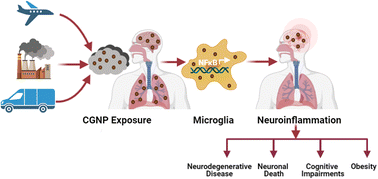According to the World Health Organization, both indoor and urban air pollution are responsible for the deaths of around 3.5 million people annually. During the last few decades, the interest in understanding the composition and health consequences of the complex mixture of polluted air has steadily increased. Today, after decades of detailed research, it is well-recognized that polluted air is a complex mixture containing not only gases (CO, NOx, and SO2) and volatile organic compounds but also suspended particles such as particulate matter (PM). PM comprises particles with sizes in the range of 30 to 2.5 μm (PM30, PM10, and PM2.5) and ultrafine particles (UFPs) (less than 0.1 μm, including nanoparticles). All these constituents have different chemical compositions, origins and health consequences. It has been observed that the concentration of PM and UFPs is high in urban areas with moderate traffic and increases in heavy traffic areas. There is evidence that inhaling PM derived from fossil fuel combustion is associated with a wide variety of harmful effects on human health, which are not solely associated with the respiratory system. There is accumulating evidence that the brains of urban inhabitants contain high concentrations of nanoparticles derived from combustion and there is both epidemiological and experimental evidence that this is correlated with the appearance of neurodegenerative human diseases. Neurological disorders, such as Alzheimer's and Parkinson's disease, multiple sclerosis, and cerebrovascular accidents, are among the main debilitating disorders of our time and their epidemiology can be classified as a public health emergency. Therefore, it is crucial to understand the pathophysiology and molecular mechanisms related to PM exposure, specifically to UFPs, present as pollutants in air, as well as their correlation with the development of neurodegenerative diseases. Furthermore, PM can enhance the transmission of airborne diseases and trigger inflammatory and immune responses, increasing the risk of health complications and mortality. Therefore, understanding the different levels of this issue is important to create and promote preventive actions by both the government and civilians to construct a strategic plan to treat and cope with the current and future epidemic of these types of disorders on a global scale.
